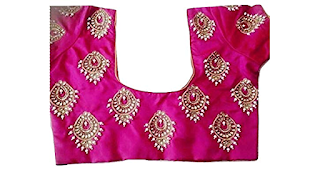The Fascinating History of Earrings: From Ancient Times to Modern Fashion
Introduction
Earrings have been a cherished form of jewelry for centuries, serving as both a fashion statement and a symbol of cultural significance. From ancient civilizations to modern society, the history of earrings is rich and intriguing. In this article, we will dive into the origins, evolution, and cultural significance of earrings throughout history. So grab your favorite pair of earrings and join us on this journey!
The Origins of Earrings: Ancient Beginnings
- Question: How far back can we trace the history of earrings?
- Answer: The history of earrings dates back thousands of years.
Earrings have a long and storied history, with evidence of their existence dating back to ancient civilizations. In fact, the oldest known earrings were discovered in ancient Mesopotamia, dating as far back as 2500 BCE. These early earrings were typically simple hoops or pendants made from materials such as gold, silver, or precious stones.
Ancient Egyptians also played a significant role in the history of earrings, with earrings being a prominent jewelry item in their culture. Both men and women wore earrings, symbolizing status, wealth, and spirituality. Egyptians favored intricate designs, often featuring symbolic motifs like the scarab beetle or the Eye of Horus.
Earrings in the Greco-Roman World: A Symbol of Wealth and Beauty
- Question: How did earrings evolve in the Greco-Roman world?
- Answer: Earrings became a symbol of wealth, beauty, and social status.
In ancient Greece and Rome, earrings were highly prized and considered a status symbol for wealthy individuals. These earrings were often adorned with gemstones and pearls, emphasizing the wearer's social standing and love for luxury. As the Roman Empire expanded, earrings became more diverse in design and material, incorporating elements from other cultures and civilizations.
Earrings in Medieval Europe: From Symbolism to Religion
- Question: How did earrings become associated with religion in Medieval Europe?
- Answer: Earrings began to reflect religious affiliations during this period.
During the Middle Ages, the history of earrings took a shift towards religious significance. Earrings were frequently worn by priests, monks, and nuns as a symbol of their religious devotion. Additionally, earrings became associated with superstitions and were believed to protect against evil spirits. This shift in symbolism reflected the dominant role of religion in medieval European society.
The Renaissance and Beyond: Earrings as Fashion Statements
- Question: How did earrings evolve in the Renaissance and subsequent periods?
- Answer: Earrings became fashionable accessories, reflecting artistic and cultural trends.
The Renaissance witnessed a resurgence of interest in the arts and humanities, leading to the evolution of earrings as fashion statements. Intricate jewelry designs adorned with precious gemstones became highly sought after, with earrings serving as a way to enhance an individual's beauty and style. The Renaissance also saw the emergence of innovative earring styles, such as the dangler earrings and hoop earrings.
As we progressed into the modern era, earrings continued to evolve alongside fashion trends. The Industrial Revolution brought significant changes to earring production, making them more accessible to various social classes. The 20th century witnessed the emergence of art movements, such as Art Nouveau and Art Deco, which influenced earring designs with their unique and unconventional styles.
Earrings in the 21st Century: A Mix of Tradition and Modernity
- Question: How have earrings remained relevant in the 21st century?
- Answer: Earrings continue to be a vital accessory in modern fashion, embracing both tradition and innovation.
In today's world, earrings have become an integral part of personal expression and style. From simple studs to statement chandeliers, earrings are available in an endless array of designs, materials, and sizes, catering to individual tastes and preferences. The rise of body piercings has also expanded the earring landscape, with styles like helix piercings and tragus piercings becoming popular choices.
In addition to their fashionable appeal, earrings continue to hold cultural and symbolic significance in many societies. They are often used to celebrate special occasions, like weddings and anniversaries, and to convey cultural identity and heritage.
Conclusion
Earrings have a rich and diverse history that spans continents and centuries. From the ancient civilizations of Mesopotamia and Egypt to the fashion-forward trends of the 21st century, earrings have captivated us with their beauty, symbolism, and cultural significance. So the next time you put on a pair of earrings, take a moment to appreciate the centuries of history they carry with them.
Meta Description: Explore the fascinating history of earrings, from ancient civilizations to modern fashion trends. Discover the symbolism, evolution, and cultural significance of this cherished form of jewelry.
Title: A Glittering Journey: Unveiling the History of Earrings



Comments
Post a Comment